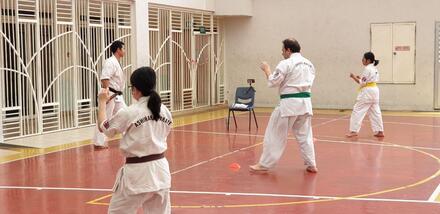MEDIA
BLOG POSTS, ARTICLES, REVIEWS, and the latest updates!
choose a category to read about!
All
Grading
Philosophy
Profiles
Review
Self-Defence
Training
All
Grading
Philosophy
Profiles
Review
Self-Defence
Training
|
Whether you’re training in karate, Brazilian Jujitsu, judo, or other contact-heavy martial arts, with the coronavirus (or COVID-19) raging worldwide, it's important and reassuring to know your martial arts instructors and dojos are finding ways to keep you safe from infection. Here are some guidelines we've gleaned from Sport Singapore advisories and other resources with best practices online, that you can adopt as a practitioner or martial arts instructor. What are the rules about safe distancing for martial arts classes during this COVID-19 pandemic? Sport Singapore’s Phase 2 updates say:
Those caught flouting the rules don't only face hefty penalties (fines). If they were using public or shared facilities, their actions can cause those facilities to be shut down indefinitely, depriving others of the chance to use them. What risks are there in martial arts classes?
 Markers on the floor help participants know where they should stand while training. Markers on the floor help participants know where they should stand while training. How can dojos enforce safe distancing between participants?
How to keep groups apart from each other?
Some Hygiene and Well-being Pointers
Last but not least...
Read up on latest, reliable sources of information about COVID-19. Some useful online resources include this e-learning resource on COVID-19 for martial arts instructors. The coronavirus has turned the way we live and work upside down, but that's no reason to give up on martial arts and our training if we inculcate safe practices. Stay safe! OSU! |
